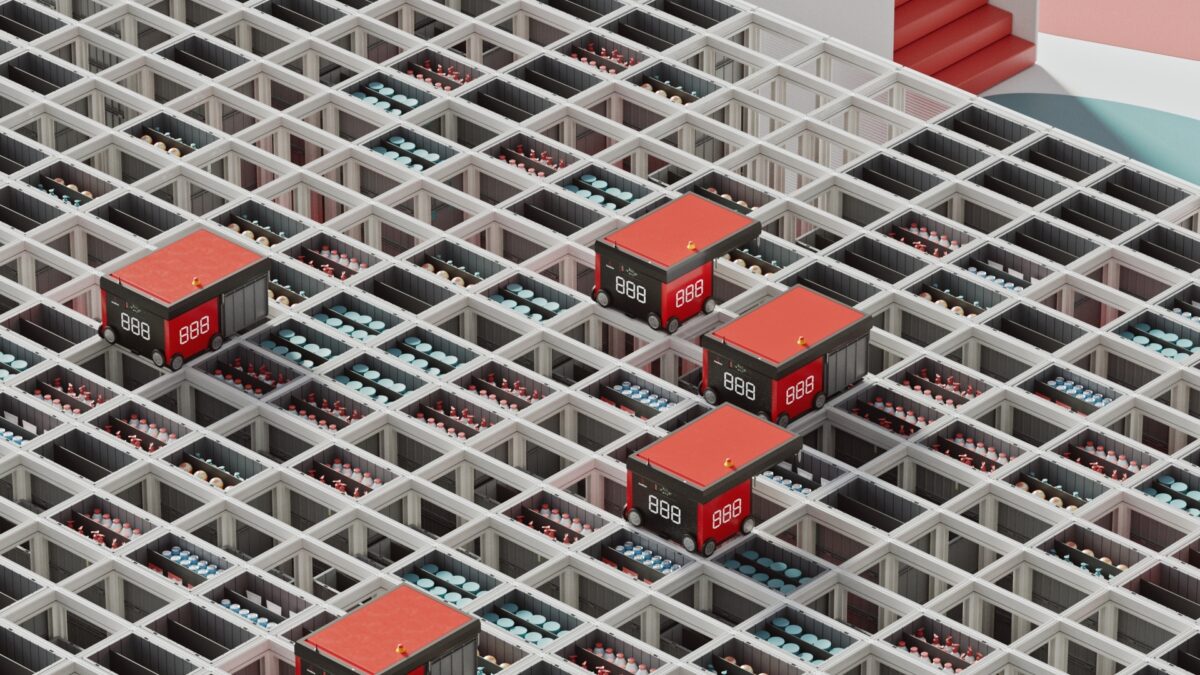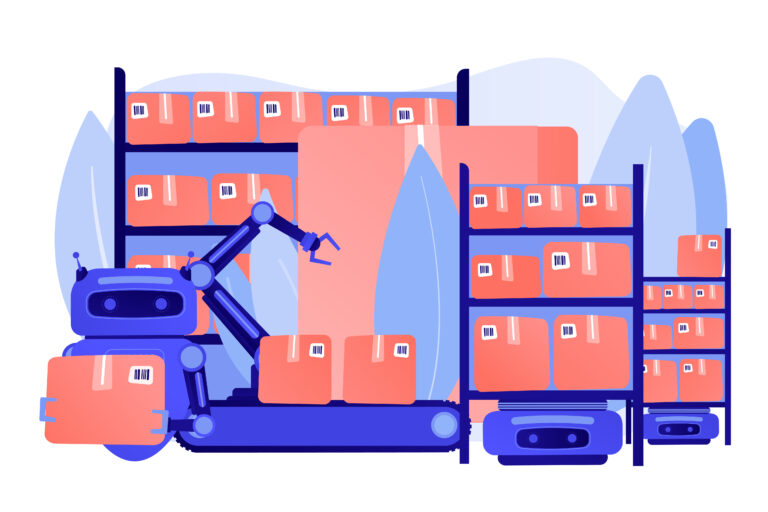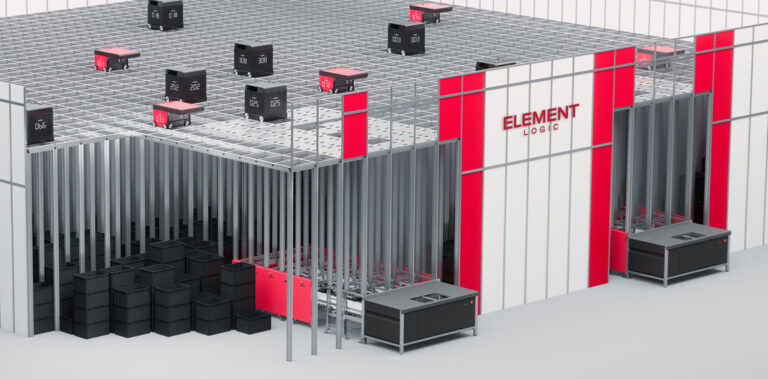Warehouse management has been more difficult than ever due to supply chain issues, rising costs, labor shortages, and increasing customer expectations. However, technology is helping companies streamline and scale order fulfillment to meet customer demand at lower costs. Robotic fulfillment systems are a key type of this warehouse technology. In this guide, we will cover the basics and benefits of robotic fulfillment and explain how you can use this technology in your warehouse.
What is Robotic Fulfillment?
Robotic fulfillment utilizes robotic technology to automate order fulfillment tasks in a warehouse or distribution center (DC). Robotic fulfillment systems are capable of streamlining picking, and packing, sorting, and retrieval. When using robotic fulfillment, the robots work alongside human workers in the warehouse to optimize efficiency and quickly fulfill customer orders. There are several benefits to using a robotic fulfillment center in your warehouse, which is why numerous companies are already using this profitable technology.
Read on to learn the top benefits of robotic fulfillment for industries including B2B wholesale, eCommerce, retail, and third-party logistics.
Benefits of Using Robotic Fulfillment
Robotic fulfillment helps companies modernize outdated workflows and transform their business model. Using automation removes the need for warehouse workers to perform tedious and repetitive tasks as well as heavy lifting. This enables companies to benefit from increased efficiency, improved accuracy, greater cost savings, and enhanced safety.
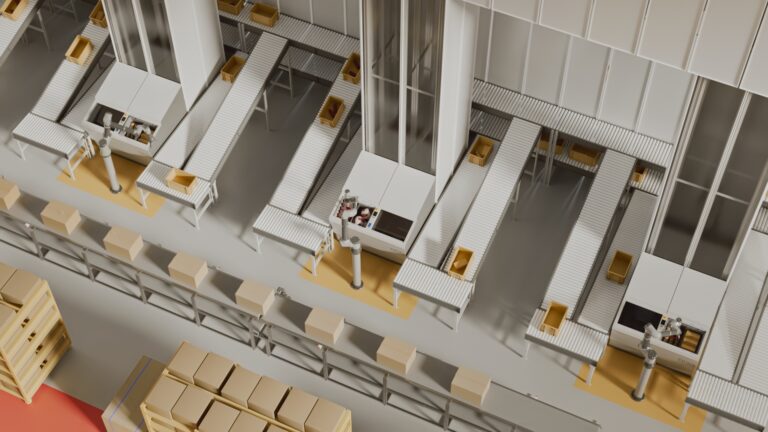
Increased Efficiency
Robotic fulfillment systems automate tasks such as picking, packing, and transporting inventory within a warehouse. For instance, the AutoStore Automated Storage and Retrieval System (ASRS) uses small robotic carts with wheels to glide across an aluminum grid installed in the warehouse. They have an elevator-like mechanism that digs out the necessary bins, transports the bins to a port, and directs the warehouse worker at the port on which items to take out. The AutoStore robots are significantly faster at picking, packing, and transporting inventory than warehouse workers and, by working in tandem with workers, helps to improve order efficiency. Processing orders more efficiently also increases customer satisfaction and retention.
Improved Accuracy
With numerous opportunities for mistakes, accurate order fulfillment requires meticulous attention to detail. Incorrect orders are terrible for the customer experience, leaving you with very little room for error. Handling a high volume of orders makes accurate order fulfillment even more challenging. A robotic fulfillment system reduces the risk of human error when filling orders. The robotic system maintains accurate inventory records, stores the inventory properly, and conducts picking and packing operations based on inventory data. This prevents unwelcome surprises and ensures that every order is filled correctly with a reliable audit trail for confirmation. Robotic fulfillment facilitates timely, accurate orders that build profitable customer trust and loyalty.
Greater Cost Savings
Manual order fulfillment is slow, error-prone, and expensive. Labor costs significantly consume warehouse budgets, and even honest mistakes in orders can result in costly fixes. Warehouse layouts also use substantially more floor space when workers are walking up and down aisles to pick or retrieve items manually. Utilizing a robotic fulfillment system like AutoStore minimizes the physical footprint in the DC, saving valuable space that can be used for other means. In addition, robotic systems can perform tasks that would otherwise be done by warehouse workers. This helps increase the profitability of your business while reducing the risk of injuries that may result in costly worker’s compensation expenses.
Enhanced Safety
Numerous warehouse management tasks have a high risk of incurring injuries, such as manually sorting, lifting, and transporting inventory. Work-related injuries are common in DCs and warehouses, especially for new employees. According to research, 37% of all workplace injuries were from first-year employees, with the most common causes being: overexertion (27%), slips, trips, and falls (22%), being struck by an object (14%), cuts and punctures (6%), and being caught in or between objects (6%).
Using a robotic fulfillment system reduces the risk of workplace injuries by relying on robotic equipment to complete high-risk tasks such as lifting and moving heavy objects. In turn, this enhances the safety of your warehouse and ensures that new and existing employees are not exposed to high levels of risk while on the job.
5 Steps to Using Robotic Fulfillment in Your Warehouse
Now that you understand the basics and benefits of robotic fulfillment, let’s dive into the 5 steps to using robotic fulfillment in your warehouse.
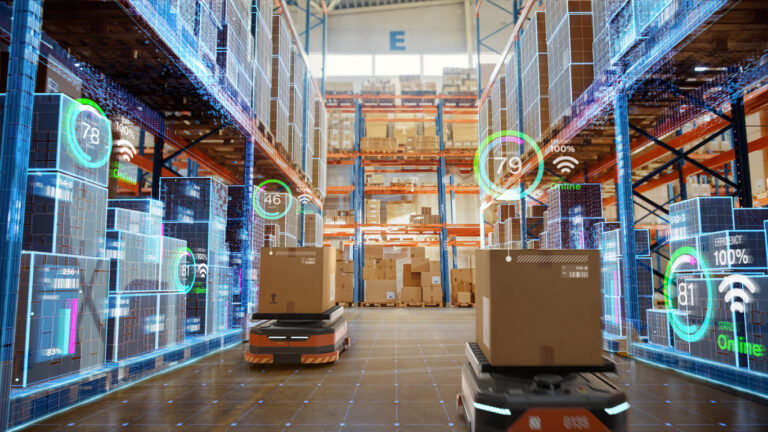
1.) Evaluate the Need for Robotic Fulfillment
Before getting started with robotic fulfillment, it’s important to assess whether your warehouse or DC has a need for this technology. Analyze your current order fulfillment process and determine your biggest pain points. If you’re experiencing pain points related to speed, efficiency, accuracy, safety, or productivity, robotic fulfillment could be a good fit for your organization.
2.) Choose the Right Type of Robotic Fulfillment System
Since there are a variety of robotic fulfillment systems available, it’s important to choose the best one for your unique needs. Consider your warehouse budget, inventory types, warehouse layout, and more. AutoStore is a great option for warehouses looking for a custom layout and high volumes of inventory.
3.) Prepare Your Warehouse
Utilizing a robotic fulfillment system will require some rearranging in your warehouse. You will want to think about the most optimized location for various ports that will be manned by warehouse workers, while the main warehouse floor will be dedicated to the new robotic equipment. For end-to-end robotic fulfillment systems, expert design teams can help you tailor the system to your specific needs.
4.) Train Your Staff
While robotic fulfillment systems are easy to use, they still require training staff on the new protocols and workflows. This will help ensure proper use of the equipment and maximize your investment. In addition, you may also need to reallocate job responsibilities to workers as they begin to work in tandem with the new technology.
5.) Ensure Maintenance and Upkeep
Robotic systems require maintenance so that they continue to function properly. Using preventative maintenance measures can help keep costs low by routinely conducting upkeep. This includes tasks such as cleaning, replacing parts, updating software, and more. An end-to-end robotic fulfillment system will offer dedicated maintenance services to help you enhance the life cycle and performance of your machinery.
Start Using Robotic Fulfillment in Your Warehouse
Robotic fulfillment is the future of warehouse management. Growing customer expectations for fast turnaround times and high-quality service are pushing the industry toward automation. In addition, robotic systems create reliable and scalable workflows, empowering organizations to strengthen their supply chains and become more profitable.
SDI Element Logic helps companies like yours embrace digital transformation and get started with robotic fulfillment. Our AutoStore technology is proven to optimize order fulfillment efficiency and make sure your supply chain is always ready to scale with your customer’s demands.
Discover how AutoStore can transform your business.
